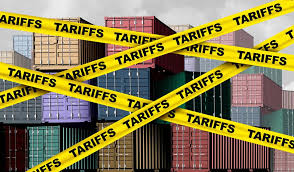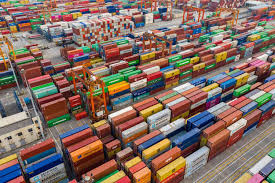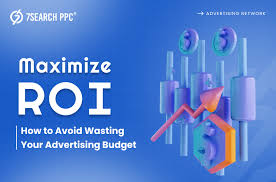
The Impact Of New Tariff Policies And How To Prepare As A Job Seeker
How Tariffs Could Impact the Job Market

The U.S. economy has been rattled by tariff policies imposed by the new administration in recent months. There have been executive orders imposing tariffs on major partners, including Canada, Mexico, and China, including 25% tariffs on Canadian and Mexican imports and raising Chinese tariffs to 20%. These new orders have propelled effective U.S. tariff rates to levels not seen since the 1940s.
This sharp pivot in trade strategy is poised to effect economic stability, which doesn’t bode well for American businesses, the stock market, and consumers. Market analysts, Mark Reid, senior U.S. economist at RBC Capital Markets, and Carrie Freestone, a member of the macroeconomic analysis group state, wrote in a public report that “if these tariffs are kept in place in the months ahead, we expect to see slowing growth, an uptick in inflation, and a hit to consumer and business confidence.”
What makes this moment particularly mind-boggling is the abrupt implementation and broad scope of these measures, introduced in the light of other national security concerns.
How Tariffs Could Impact the Job Market
The tariffs on Canada and Mexico create notable uncertainty for businesses dependent on North American trade. This uncertainty may influence hiring decisions, as companies historically hesitate to expand workforces or invest in production capacity when future trade conditions remain unpredictable.
In 2024, the Census Bureau trade statistics showed that Canada and Mexico together accounted for 28% of all U.S. imports. With North American supply chains being so highly integrated, we stand to experience significant workforce adjustments as companies reassess their operational strategies.
he automotive industry is vulnerable due to its deeply integrated continental supply chain. Vehicles often cross borders multiple times during production, with U.S. intermediate products comprising a significant portion of imported goods from Canada and Mexico.
Agriculture represents another sector likely to experience significant employment impacts, as Canada, Mexico, and China collectively account for approximately half of U.S. agricultural imports.
What Tariffs Are And Their Purpose
At their core, tariffs are levies imposed on imported goods as they cross national borders. Unlike domestic taxes, such as income or property taxes, tariffs target foreign products entering the American market.
The distinction between tariffs and other forms of taxation is significant. While conventional taxes primarily generate revenue, tariffs serve multiple economic and political objectives simultaneously. They can protect domestic industries by making imported alternatives less competitive, counteract what policymakers perceive as unfair trade practices, and provide leverage in international negotiations. This multifaceted nature makes tariffs particularly complex economic tools.
Throughout American history, the purpose of tariffs has evolved considerably. In the nation’s early years, they constituted a primary source of federal revenue. However, this role diminished significantly after establishing the federal tax income through the 16th Amendment in 1913. Following the Great Depression, tariffs transitioned from revenue generators to strategic instruments for economic policy and trade negotiations.
The impact of tariffs ripples across the economy through various means. Most directly, they typically lead to higher consumer prices as companies pass along increased costs to consumers. This effect is particularly pronounced in sectors heavily reliant on imported components or raw materials. The U.S. automotive industry offers a compelling example, with its significant dependence on Canadian parts for manufacturing processes.
The current tariff policies could substantially increase government revenue. Based on 2024 import data from Canada, Mexico, and China, the recently announced tariffs could generate approximately $300 billion in additional revenue, representing roughly one-third of the annual cost of extending the Tax Cuts and Jobs Act.
However, this projection assumes unchanged demand patterns, which is an unlikely scenario as consumers and businesses respond to higher prices by seeking alternatives from non-tariffed countries. The revenue increase will likely fall short of this estimate due to reduced demand and substitution effects.
When implemented strategically, tariffs can support economic development by protecting key industries essential for a nation’s future growth. The Biden administration’s tariffs on Chinese electric vehicles are a prime example, as they were part of a comprehensive strategy to develop domestic EV production.
How Tariffs Impact The Economy
According to economic experts, the President Donald Trump administration’s tariff strategy utilizes presidential authority granted under specific U.S. laws that allow for tariff implementation without requiring congressional approval.
The legal framework for these tariffs primarily relies on provisions designed for national security concerns or emergencies. The administration has invoked these provisions to justify the 25% tariffs on Canada and Mexico and the increased 20% tariffs on Chinese goods. These measures address what the administration identifies as pressing security issues, including concerns about illegal immigration and the fentanyl crisis.
The reimposition of tariffs on Canada and Mexico represents a significant development in North American trade relations. These changes come despite the previously established United States–Canada–Mexico Agreement, which Trump signed in 2020, highlighting a shift in the administration’s trade priorities and approach to regional economic partnerships.
Recent economic analysis provides a valuable perspective on potential employment outcomes. Following similar tariffs in 2018, U.S. steel manufacturers added approximately 1,000 new jobs as domestic production became more competitive. However, industries that use steel and aluminum as inputs, including auto parts, motorcycles, household appliances, and machinery manufacturers, experienced substantial adverse employment effects. By 2019, these downstream sectors had hired 75,000 fewer workers than projected without the tariffs, according to research from Harvard and the University of California, Davis.
The non-durable goods sector also faces substantial exposure, particularly regarding Chinese imports. With China providing nearly $100 billion in U.S. imports of chemicals, pharmaceuticals, paper products, and textiles, companies in these industries may need to recalibrate their workforce needs as they adapt to new cost structures.
How Job Seekers Should Respond to Tariff-Related Disruptions
In the face of significant economic shifts driven by new tariff policies, job seekers need strategic approaches to navigate a dynamic job market. Understanding which industries face the most significant disruption and which may benefit offers valuable guidance for career planning in 2025.
Develop Cross-Sector Skills
Versatility has never been more valuable, especially now as the American market is in a transition. The World Economic Forum’s Future of Jobs report emphasizes that in 2025, the skills in the highest demand will be analytical thinking, innovation, and active learning. Job seekers should consider investing now in these transferable skills that remain relevant across multiple sectors.
Professionals with diverse skill sets typically experience shorter unemployment during industry disruptions than those with highly specialized, sector-specific abilities.
Target Growth Opportunities
While specific industries face contraction due to tariff impacts, others may expand as manufacturing returns to domestic markets. Job seekers should research which domestic industries benefit from reduced international competition.
Companies producing substitutes for previously imported goods could grow, creating new employment opportunities. In addition, companies that help businesses adjust their supply chains, improve shipping and delivery systems, or navigate new trade rules often hire more workers when tariff policies change.
Consider Geographic Mobility
Tariff impacts often vary significantly by region based on local industry concentrations. Job seekers willing to relocate may dramatically find better opportunities in areas less affected by specific tariff measures or regions benefiting from manufacturing reshoring.
For instance, some metropolitan areas are experiencing growth in manufacturing employment despite broader sectoral challenges, creating geographic pockets of opportunity.
Diversify Income Sources
The gig economy and contract work offer ways to build financial resilience during sector-specific disruptions. Developing secondary income streams through freelance projects, consulting, or platform-based work provides a financial buffer while pursuing long-term career opportunities.
The only thing for certain is that change is inevitable. When it comes to being a job seeker in an unpredictable economy, especially one where tariff changes are imminent, it’s imperative to keep your skill set sharp, your income sources diversified, and your goals flexible. Those who approach their search with resiliency and an opportunistic mindset are the ones that thrive.
Post Free Ads Instantly – AI-Boosted Visibility on PRICIP
Escort directory | VIP escort girls | Escort list
NewsTalk 1290 KWFS – News and Talk of Texoma – Wichita Falls News Radio
Sorry, America, tariffs won’t bring jobs back | Donald Trump | Al Jazeera
Trump tariffs: Job market impact will mostly be negative, economists say











